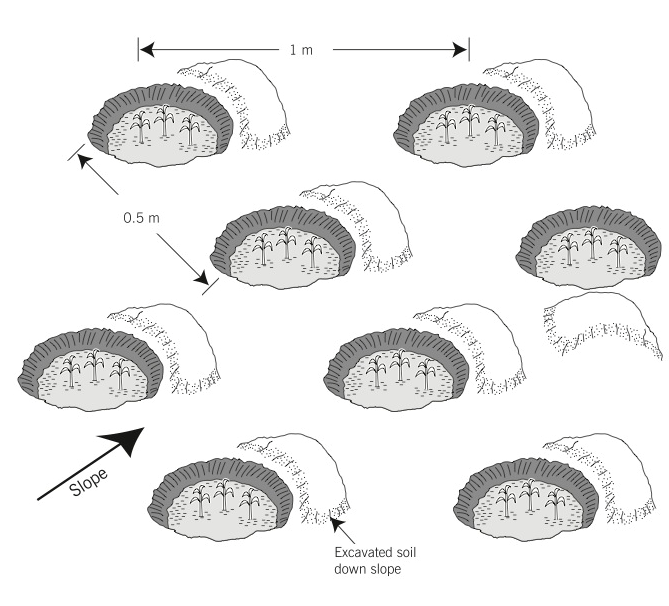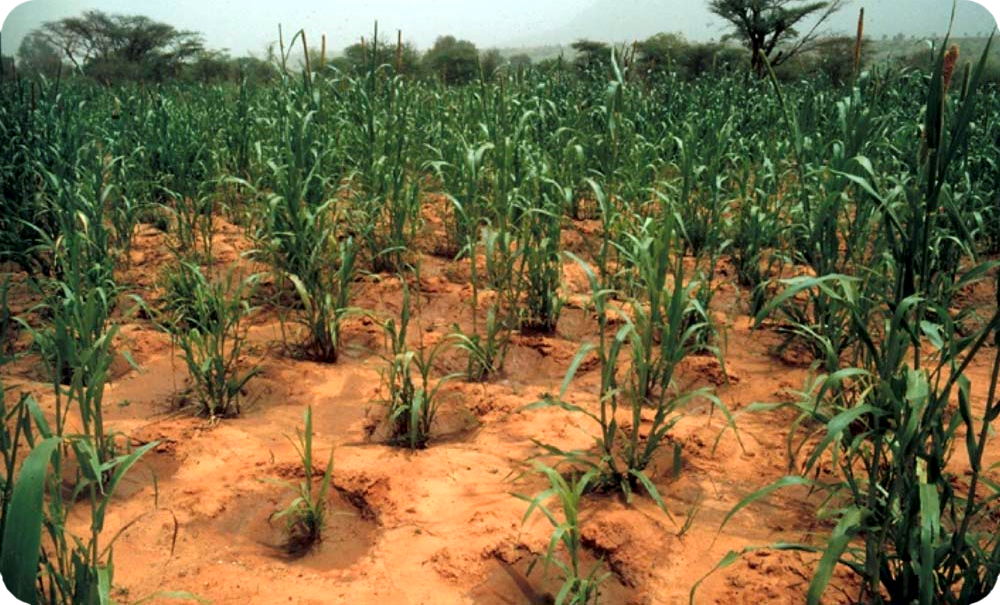Application: Aquifers, farms
Description: Planting pits is a form of micro-catchment for precipitation harvesting to prevent water runoff and thereby preserve soil and soil moisture, increase infiltration and reduce erosion. The water collected is used for crops planted in close proximity. To further increase crop production, organic matter (such as compost or manure) can be placed in the pits as fertilizer. Basically, holes are dug 50-100 cm apart from each other with a depth of 5-15 cm in order to prevent water runoff. Planting pits are most suitable on soil with low permeability, such as silt and clay. When heavy rainfall occurs, the organic matter can additionally help to soak up excess water, preventing unwanted water accumulation. They are suitable to semi-arid areas for annual and perennial crops (such as sorghum, maize, sweet potatoes and bananas).
Contribution to climate resilience: Planted pits prevent water run-off, thus reducing erosion from heavy rainfall. Collected water is used to irrigate nearby crops, reducing dependence on other water sources.
Supplementary sources of information:
http://www.sswm.info/content/planting-pits
http://www.cgiar.org/?attachment_id=2106
Background image credit: Agroenvironmental transformation in the Sahel Another kind of Green Revolution
This resilience-building measure is sourced from the Water Resource Adaptation Guide (2019) published by the National Council for Sustainable Development at the Ministry of Environment in Cambodia. The full Guide is available to download at URL https://ncsd.moe.gov.kh/sites/default/files/2019-10/Water%20Resources%20Adaptation%20Guide_March%202019_En.pdf


